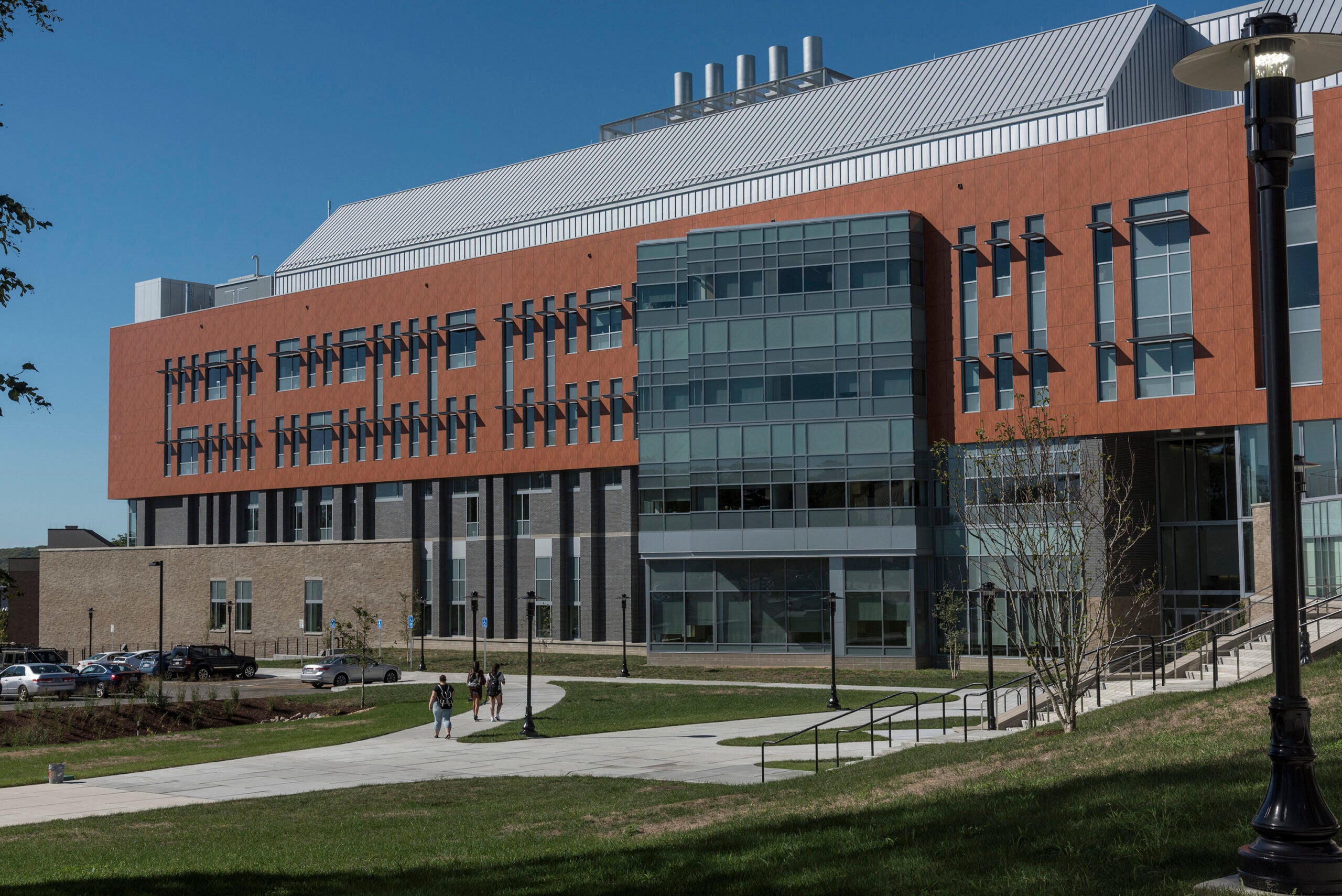KINGSTON, R.I. — December 20, 2017 — You’ll have to forgive University of Rhode Island Director of Capital Projects Paul DePace for saying that there’s been some alchemy going on at the Beaupre Center for Chemical and Forensic Sciences.
That’s because the 134,623 square-foot Beaupre Center has been certified LEED Gold, a designation by the United States Green Building Council, a feat that can be hard for science buildings to achieve because of their high energy and technology demands and need for sophisticated heating, ventilation and air conditioning systems. Beaupre’s LEED (Leadership in Environmental Engineering and Design) certification is the 11th for buildings at URI.
The other LEED Gold Certified buildings at URI are the Center for Biotechnology and Life Sciences, Fascitelli Fitness and Wellness Center and Hillside (residence) Hall. The University has four LEED Silver buildings and three with the LEED “certified” tag. The top level is LEED Platinum
“The key to LEED Gold for Beaupre is the HVAC equipment and system,” said Mark Fisher, senior project manager for Keough Construction Management Inc., and the buyer’s representative for URI on the project. “Because this is a chemistry facility, the HVAC system must bring in 100 percent clean, new air on a constant basis and it must fully exhale the old air. The system cannot recycle the air, which makes managing energy consumption a challenge.”
“LEED Gold is very impressive for a science building, and we have to credit the architect, Wilson Architects Inc. of Boston, for designing such a great teaching, learning and research center that also reflects the value the University places on sustainability,” DePace said.
The building has 172 exhaust hoods and 171 exhaust snorkels that expel hazardous fumes from the building.
Despite the ventilation demands, the system is able to capture energy, which is used to heat the building in the winter and cool it in the summer.
In addition, the exhaust hoods are equipped with sensors that activate them when the teaching and learning laboratories are in use and power them down when they are idle.
“This technology helps us achieve big energy savings,” DePace said.
All lighting in the building is governed by sensors so lights go off when no one is in an office, lab or lecture hall. High-efficiency LED (light-emitting diode) lights illuminate the building’s exterior. The building was constructed using locally sourced materials to minimize fuel consumption related to shipping.
“We used sustainable materials throughout the building,” DePace said.
“For instance,” Fisher added, “we used certified sustainable wood products, and all of the aggregate materials — stone, concrete and processed gravel — were obtained from nearby sources. All construction waste materials were recycled.”
The University required the contractor to segregate all waste materials and none of it wound up in the Rhode Island Resource Recovery landfill in Johnston.
Fisher said the project received some of its highest marks for open space and a rain garden that collects and filters storm runoff before it enters the White Horn Brook watershed.
“This is part of the campus stormwater management plan, which also includes rain gardens at the nearby Center for Biotechnology and Life Sciences and the Paramaz Avedisian ’54 Hall (the pharmacy building),” Fisher said. “The landscape looks very nice and is easily maintained.”
The $68 million Beaupre Center opened in September 2016. Funded in large part by a $61 million general obligation bond issue approved by Rhode Island voters in the 2010 election, the facility bears the name of Richard E. Beaupre, an alumnus and longtime supporter of the University who made a major gift to support the project.
The contractor was Bacon Construction of Rumford R.I.

